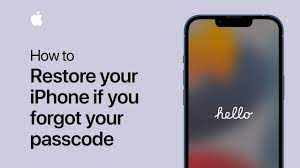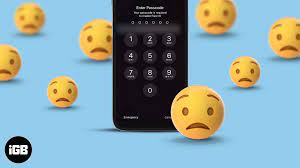Ensuring Security and Convenience: Mastering Your iPhone Passcode
Introduction
In an age where smartphones have become an integral part of our lives, ensuring the security of personal information and data has become paramount. The iPhone, renowned for its advanced security features, offers users the ability to set a passcode as a safeguard against unauthorized access. In this blog, we will explore the importance of an iPhone passcode, provide insights into setting a strong passcode, and offer tips for managing and troubleshooting passcode-related issues.
The Importance of an
iPhone Passcode
An iPhone passcode serves as the
first line of defence against unauthorized access to your device and the
sensitive data it contains. It provides a vital layer of protection,
safeguarding your personal information, financial details, confidential emails,
and other sensitive data from potential threats.
Setting a Strong
Passcode
To ensure the utmost security for
your iPhone, it is essential to set a strong passcode. Here are some key
considerations when choosing your passcode:
1.
Length and Complexity:
Opt for a passcode that is at least six digits long, but ideally, consider
using a longer alphanumeric passcode for enhanced security. Mix uppercase and
lowercase letters, numbers, and special characters to create a robust and
unique passcode.
2.
Avoid Common Patterns:
Steer clear of easily guessable patterns such as "123456" or
"password." Hackers often employ common passcode combinations when
attempting unauthorized access.
3.
Touch ID and Face ID:
Take advantage of biometric authentication options like Touch ID or Face ID for
quick and convenient access to your device. These features complement your
passcode and provide an additional layer of security.
Managing and
Troubleshooting Passcode-Related Issues
While a passcode is essential for
security, it can occasionally lead to issues such as forgotten passcodes or
disabled devices. Here are some tips for managing and troubleshooting
passcode-related problems:
1.
Passcode Recovery:
If you forget your passcode, attempt to enter it several times. After a certain
number of failed attempts, your device will prompt you to recover your passcode
using your Apple ID or iCloud account.
2.
Data Backup:
Regularly back up your device using iCloud or iTunes to ensure that your data
remains safe in case of passcode-related issues.
3.
Device Disabled:
If you enter the wrong passcode too many times, your device will become
temporarily disabled. In such cases, connect your device to a trusted computer
with iTunes and follow the instructions to restore or reset your device.
4.
Two-Factor Authentication:
Enable two-factor authentication for your Apple ID to add an extra layer of
security and protect your data even if your passcode is compromised.
Conclusion
Securing your iPhone with a strong passcode
is essential for safeguarding your personal information and ensuring peace of
mind. By following best practices for passcode selection, utilizing biometric
authentication features, and understanding how to manage passcode-related
issues, you can enhance the security of your iPhone and protect your sensitive
data from unauthorized access. Remember, maintaining a strong passcode and
regularly updating it contributes significantly to the overall security of your
device, offering you the convenience of a seamless user experience while
ensuring your personal information remains confidential and protected.





Comments
Post a Comment